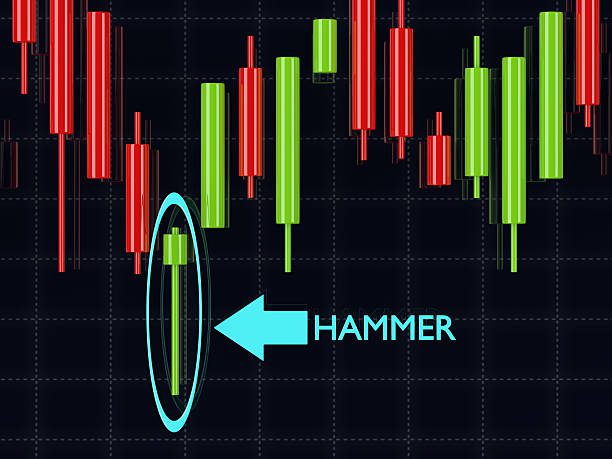Key Concepts of Candlestick Patterns
Candlestick patterns are a fundamental tool used in technical analysis by traders and investors to analyze and predict price movements in financial markets. Each candlestick represents the price activity of an asset during a specific time period. The shape and color of the candlestick provide valuable information about the market sentiment and potential future price direction.
Understanding the key concepts of candlestick patterns involves recognizing different patterns that can signal bullish or bearish market reversals or continuations. These patterns are formed by one or more candlesticks with specific characteristics, such as the body size, wicks, and their placement relative to previous candles. By learning to interpret these patterns accurately, traders can make more informed decisions and improve their chances of successful trading outcomes.
Identifying Hammer Patterns in Candlestick Charts
Hammer patterns in candlestick charts are characterized by a small body at the top of the candlestick with a long lower wick, resembling a hammer. This formation typically signals a potential reversal in the trend, with the long lower wick indicating that sellers pushed the price lower during the session but were ultimately overpowered by buyers who pushed the price back up, closing near the high of the session.
To correctly identify a hammer pattern in a candlestick chart, look for a candle with a small real body near the top of the price range and a long lower shadow that is at least two to three times the length of the real body. The absence of an upper shadow or a very small upper shadow further strengthens the validity of the hammer pattern. Keep in mind that the color of the candlestick (whether it is green or red) is not as important as the shape and characteristics of the pattern itself when identifying a hammer formation.
Investment in share market can be a lucrative way to grow your wealth over time. By carefully analyzing candlestick charts and identifying hammer patterns, investors can make informed decisions about when to enter or exit trades. The Hammer pattern, with its small body and long lower wick, indicates a potential reversal in the trend, signaling a buying opportunity for traders. To enhance your trading skills and stay updated on market trends, consider using the investment in share market app, which provides real-time data and analysis to help you make profitable investment decisions in the stock market.
Understanding the Psychology Behind Hammer Candlesticks
When analyzing the psychology behind hammer candlesticks, one must consider the battle between buyers and sellers during a specific trading period. The formation of a hammer pattern signals a potential reversal in market sentiment. The long lower shadow of a hammer candlestick suggests that sellers pushed the price lower initially, only for buyers to step in and drive the price back up, ultimately closing near the opening level.
Traders interpreting hammer candlesticks view them as a sign of bullishness amidst prior bearish pressure. The lower shadow indicates that buyers were able to overcome selling pressure, signaling a possible shift in momentum. This psychological shift can lead to an increase in buying interest, driving the price higher in subsequent trading sessions. Understanding the psychology behind hammer candlesticks can help traders anticipate potential trend reversals and make informed trading decisions.
Differentiating Hammer Candlesticks from Other Patterns
To differentiate hammer candlesticks from other patterns, it is important to understand their unique characteristics. A hammer candlestick typically has a small real body at the top of the trading range with a long lower shadow that is at least two times the length of the body. This formation suggests that despite some selling pressure, buyers were able to push the price back up, indicating a potential reversal from a downtrend to an uptrend.
In contrast, other patterns like shooting stars or gravestone dojis have similar shapes to hammer candlesticks but appear at the top of an uptrend. These patterns signal potential bearish reversals, as they indicate that despite some buying activity, sellers were able to push the price lower. It is crucial to pay attention to the placement of these patterns within the overall trend to accurately interpret their implications for future price movements.
Factors Influencing the Strength of Hammer Patterns
One of the key factors that can influence the strength of hammer patterns in candlestick charts is the volume traded during the formation of the pattern. A hammer pattern accompanied by high trading volume suggests more market participation and can indicate a stronger signal. Conversely, a hammer pattern formed on low volume may be less reliable as it might not reflect significant market sentiment.
Another factor to consider is the overall market trend in which the hammer pattern appears. A hammer pattern that forms during a strong uptrend or downtrend may carry more weight as it aligns with the prevailing market direction. In contrast, a hammer pattern occurring in a sideways or choppy market may be less significant and could lead to false signals. Understanding the context in which the hammer pattern emerges is crucial in assessing its strength and potential impact on future price movements.
Tips for Trading Hammer Candlestick Patterns Successfully
When trading hammer candlestick patterns, it is crucial to wait for confirmation before making any trading decisions. This confirmation could come in the form of a strong bullish follow-through in the next candle or a break above the high of the hammer pattern. By exercising patience and not jumping the gun, traders can avoid false signals and increase their chances of successful trades.
Additionally, it is advisable to consider the broader market context when identifying and trading hammer candlestick patterns. Understanding the overall trend, key support and resistance levels, and any significant news or events impacting the market can help traders make more informed decisions. By incorporating this bigger picture perspective, traders can better assess the strength and reliability of hammer patterns and improve their trading outcomes.
When trading hammer candlestick patterns, it is crucial to wait for confirmation before making any trading decisions. This confirmation could come in the form of a strong bullish follow-through in the next candle or a break above the high of the hammer pattern. By exercising patience and not jumping the gun, traders can avoid false signals and increase their chances of successful trades. Additionally, it is advisable to consider the broader market context when identifying and trading hammer candlestick patterns. Understanding the overall trend, key support and resistance levels, and any significant news or events impacting the market can help traders make more informed decisions. By incorporating this bigger picture perspective, traders can better assess the strength and reliability of hammer patterns and improve their trading outcomes. If you are looking to enhance your trading experience, consider using a margin trading app that offers advanced features to help you make better trading decisions.
Common Mistakes to Avoid When Trading Hammer Candlesticks
When trading hammer candlestick patterns, it is crucial to avoid overestimating the significance of a single candlestick. One common mistake is to see a hammer pattern and immediately assume a bullish reversal will occur. It is essential to consider other factors, such as volume, trend direction, and confirmation from other indicators, to make a more informed trading decision.
Another mistake to avoid is placing trades solely based on the appearance of a hammer candlestick without considering the overall market context. It is important to assess the broader market conditions and not rely solely on a single candlestick pattern for trading signals. Overlooking key support and resistance levels, as well as failing to consider market sentiment, can lead to trading errors when using hammer patterns as a trading signal.
Using Hammer Patterns in Conjunction with Other Technical Indicators
When incorporating hammer patterns into your trading strategy, it can be beneficial to combine them with other technical indicators to enhance the accuracy of your analysis. By using indicators such as moving averages, relative strength index (RSI), or stochastic oscillators in conjunction with hammer candlesticks, you can gain a more comprehensive view of market dynamics. These additional tools can help confirm the signals provided by hammer patterns and offer further insight into potential price movements.
For instance, if a hammer pattern forms near a significant support level on a price chart and is accompanied by a bullish crossover of moving averages, it could reinforce the bullish bias indicated by the hammer candlestick. Similarly, if the RSI shows oversold conditions at the time of the hammer formation, it may strengthen the signal of a potential price reversal. By combining hammer patterns with other technical indicators, traders can make more informed trading decisions and improve the overall effectiveness of their strategies.
Real-Life Examples of Hammer Patterns in Trading Scenarios
In a real-life trading scenario, a hammer pattern appeared on the daily chart of Company XYZ, indicating a potential reversal from a downtrend. The long lower shadow of the candlestick showed that sellers pushed the price lower during the trading session, but buyers managed to bring it back up, closing near the high of the day. This signified a shift in momentum, with buyers gaining control and likely leading to a bullish move in the near future.
Another example of a hammer pattern in a trading scenario occurred in the stock of Company ABC. On the weekly chart, a hammer formed after a period of consolidation, suggesting a strong support level at the low of the candlestick. This pattern often signals a bullish reversal, especially when confirmed by increasing trading volume. Traders who recognized this setup could have entered long positions with a stop-loss below the hammer’s low, aiming to ride the potential uptrend that followed.
Resources for Further Learning on Candlestick Patterns
For individuals interested in delving deeper into the world of candlestick patterns and enhancing their trading skills, there are numerous resources available to further their knowledge. Websites such as Investopedia and BabyPips offer comprehensive guides and tutorial videos on understanding and interpreting various candlestick patterns, including the hammer pattern. These resources provide both beginners and experienced traders with valuable insights and practical examples to refine their analytical abilities.
Moreover, books like “Japanese Candlestick Charting Techniques” by Steve Nison and “Candlestick Charting Explained” by Gregory L. Morris are considered essential reads for those looking to master the art of candlestick analysis. These resources go beyond the basics and explore advanced concepts, intricate patterns, and real-life trading strategies that can help traders navigate the complexities of the financial markets with confidence. By utilizing these resources, traders can expand their knowledge base and develop a deeper understanding of candlestick patterns, enabling them to make more informed trading decisions.











